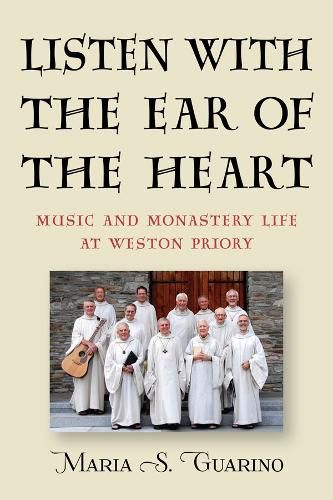Readings Newsletter
Become a Readings Member to make your shopping experience even easier.
Sign in or sign up for free!
You’re not far away from qualifying for FREE standard shipping within Australia
You’ve qualified for FREE standard shipping within Australia
The cart is loading…






Far from being a long-silent echo of medieval religion, modern monastery music is instead a resounding, living illustration of the role of music in religious life. Benedictine monks gather for communal prayer upwards of five times per day, every day. Their prayers, called the Divine Office, are almost entirely sung.
Benedictines are famous for Gregorian Chant, but the original folk-inspired music of the monks of Weston Priory in Vermont is among the most familiar in post-Vatican II American Catholicism. Using the ethnomusicological methods of fieldwork and taking inspiration from the monks’ own way of encountering the world, this book offers a contemplative engagement with music, prayer, and everyday life. The rich narrative evokes the rhythms of learning among Benedictines to show how monastic ways of being, knowing, and musicking resonate with humanistic inquiry and the pursuit of knowledge and understanding.
Support for this publication was provided by the Howard Hanson Institute for American Music of the Eastman School of Music at the University of Rochester.
$9.00 standard shipping within Australia
FREE standard shipping within Australia for orders over $100.00
Express & International shipping calculated at checkout
Far from being a long-silent echo of medieval religion, modern monastery music is instead a resounding, living illustration of the role of music in religious life. Benedictine monks gather for communal prayer upwards of five times per day, every day. Their prayers, called the Divine Office, are almost entirely sung.
Benedictines are famous for Gregorian Chant, but the original folk-inspired music of the monks of Weston Priory in Vermont is among the most familiar in post-Vatican II American Catholicism. Using the ethnomusicological methods of fieldwork and taking inspiration from the monks’ own way of encountering the world, this book offers a contemplative engagement with music, prayer, and everyday life. The rich narrative evokes the rhythms of learning among Benedictines to show how monastic ways of being, knowing, and musicking resonate with humanistic inquiry and the pursuit of knowledge and understanding.
Support for this publication was provided by the Howard Hanson Institute for American Music of the Eastman School of Music at the University of Rochester.